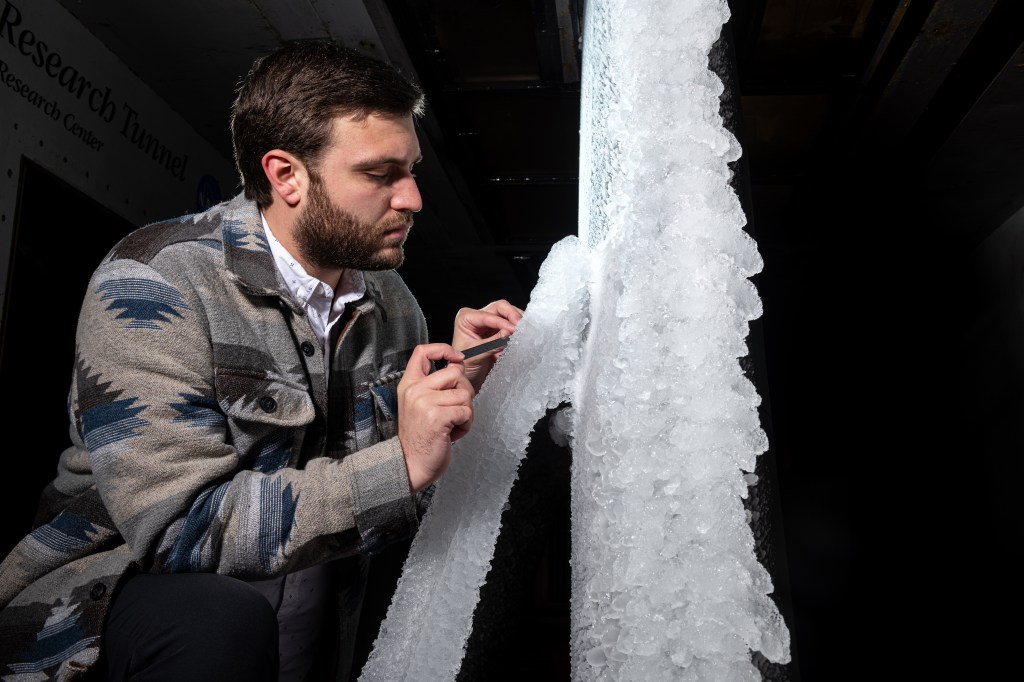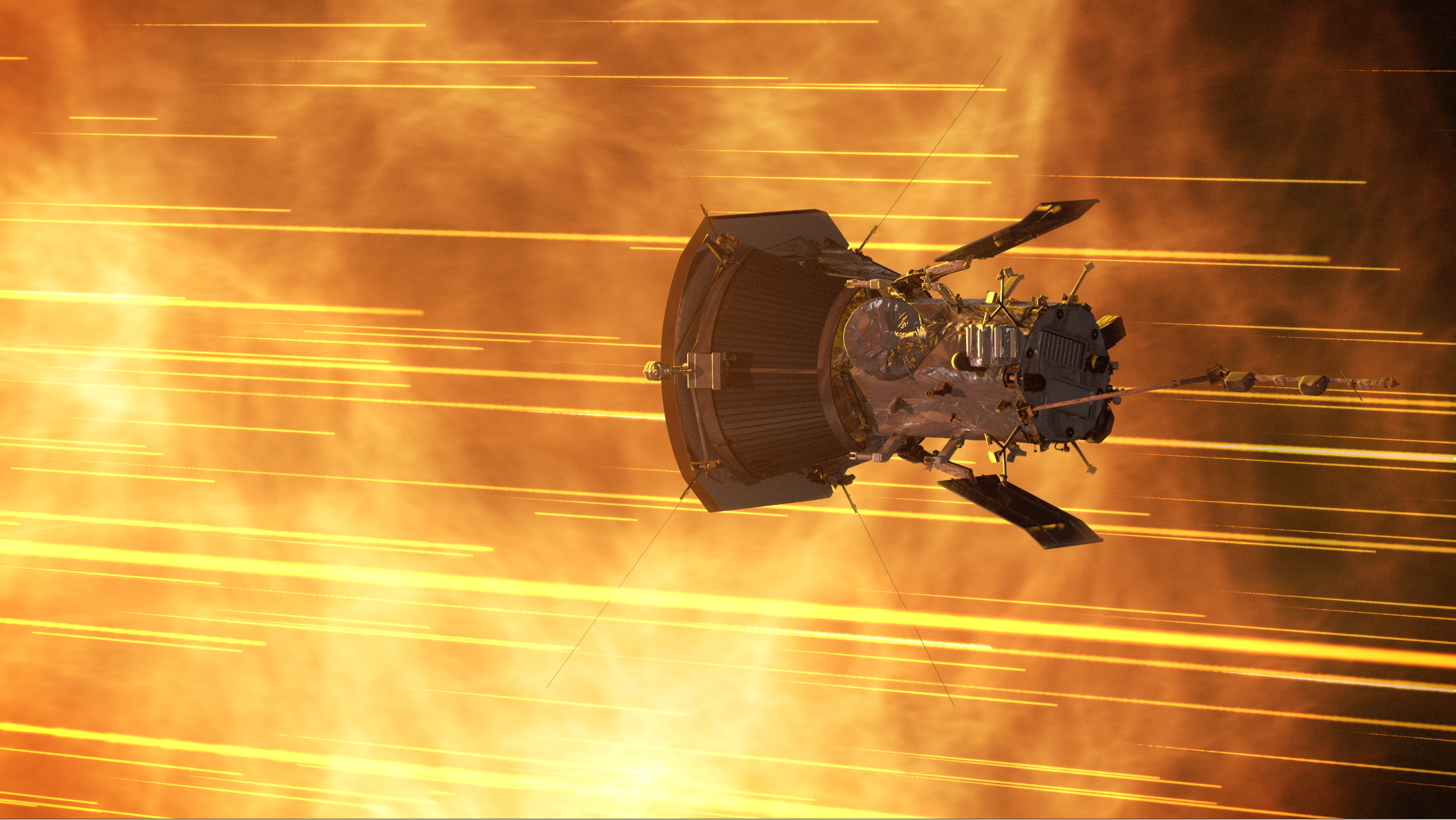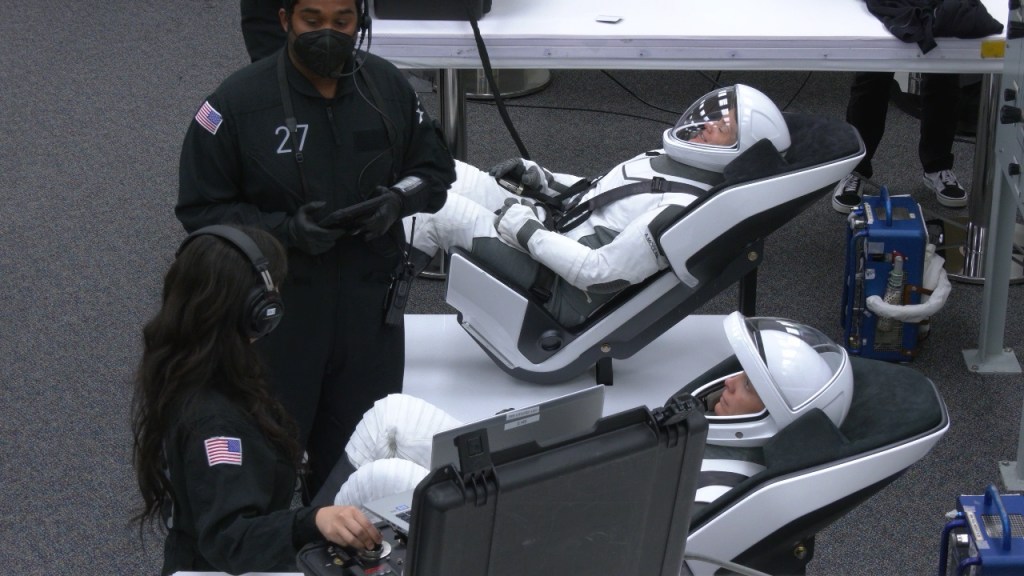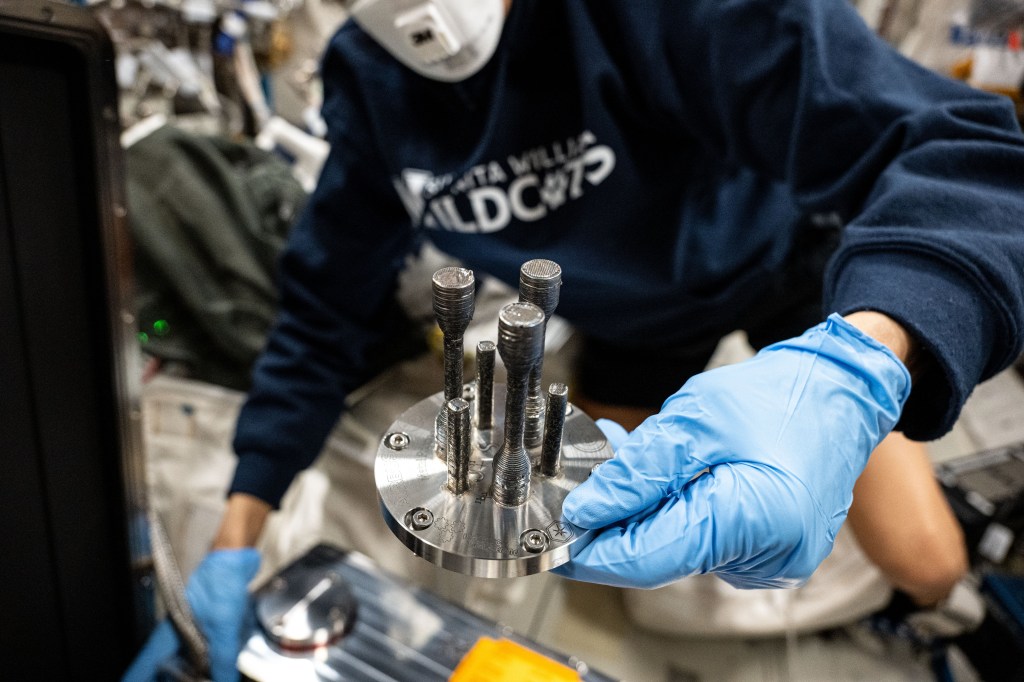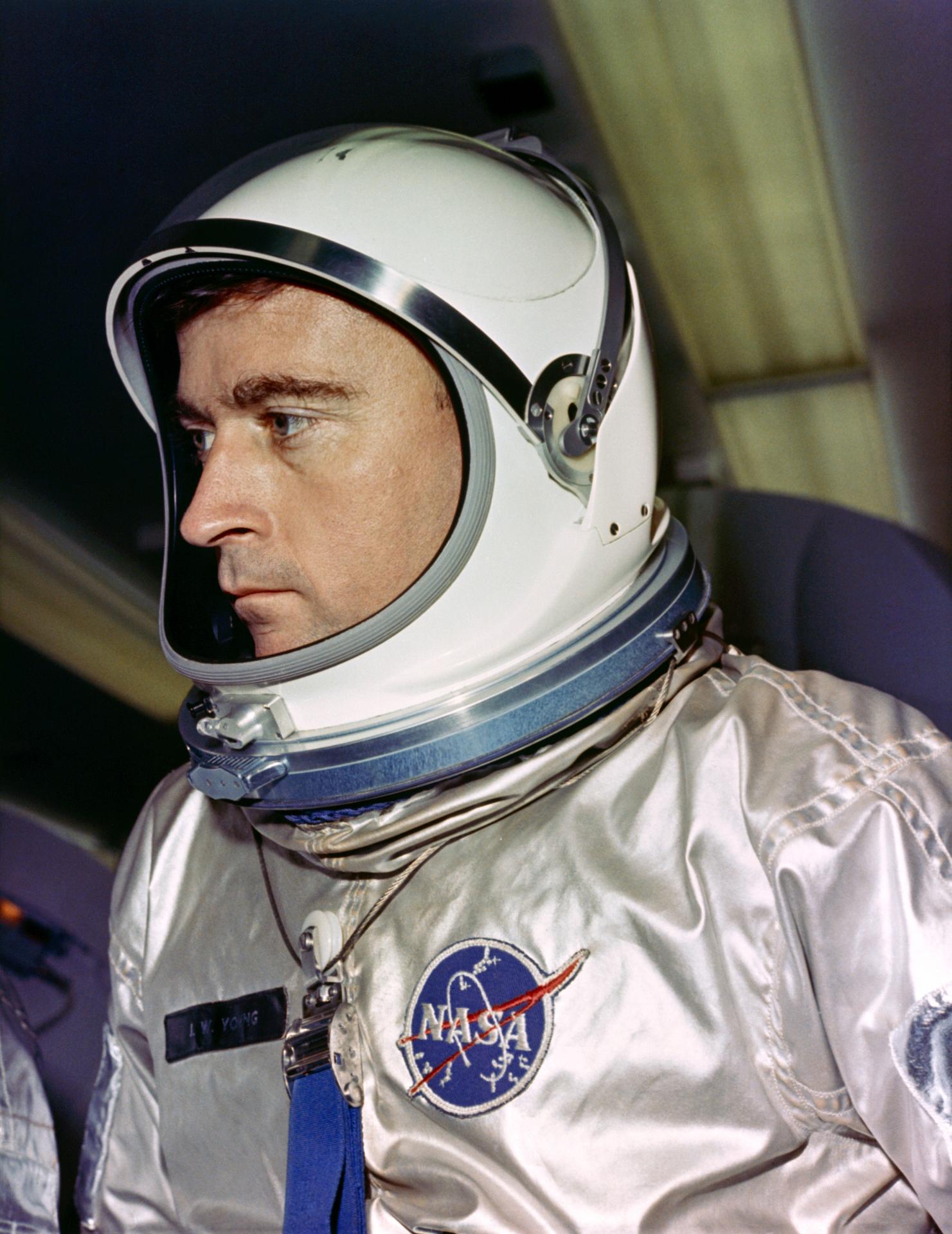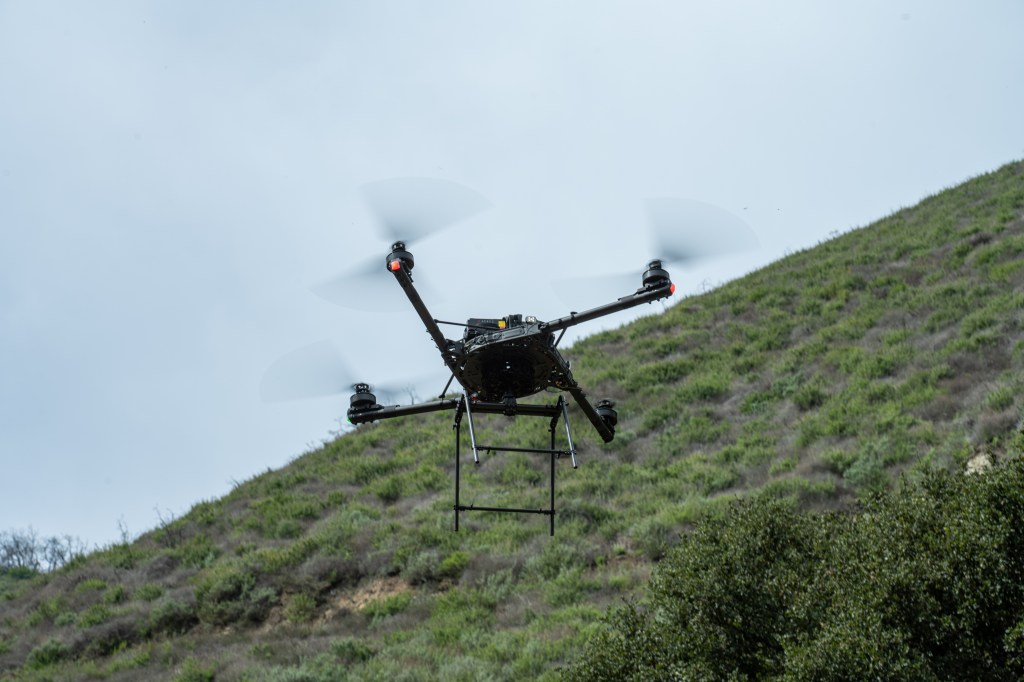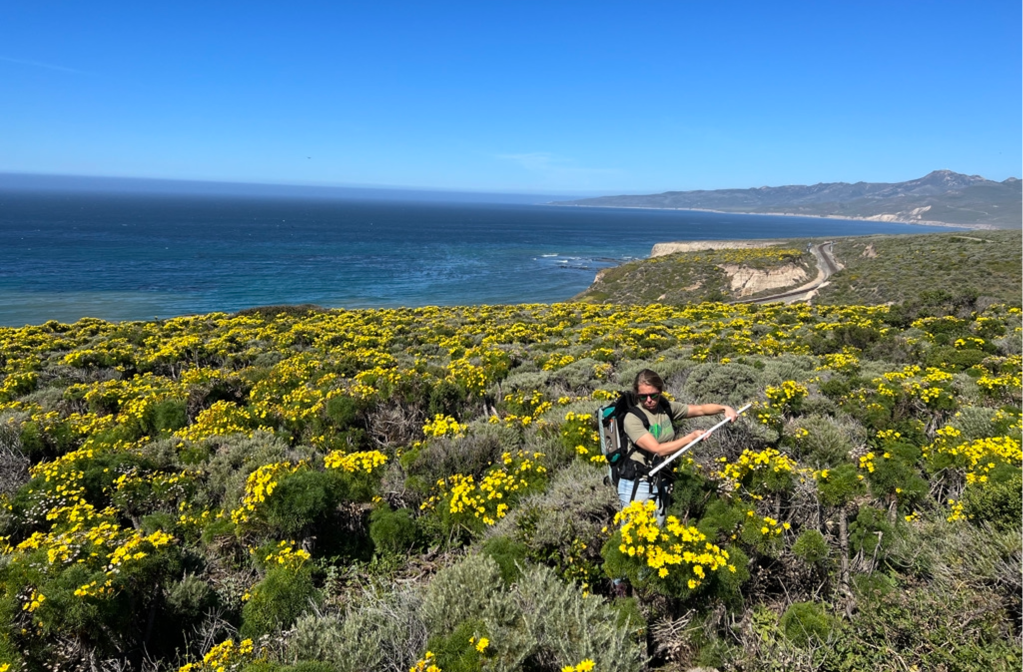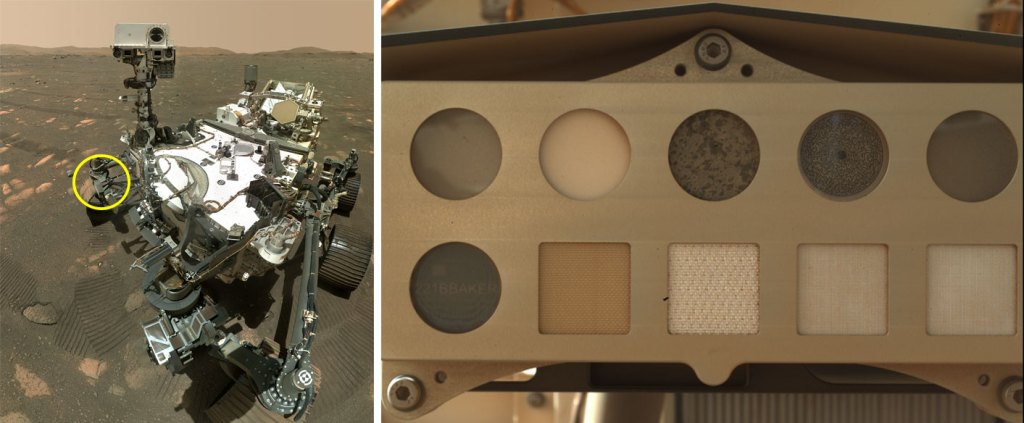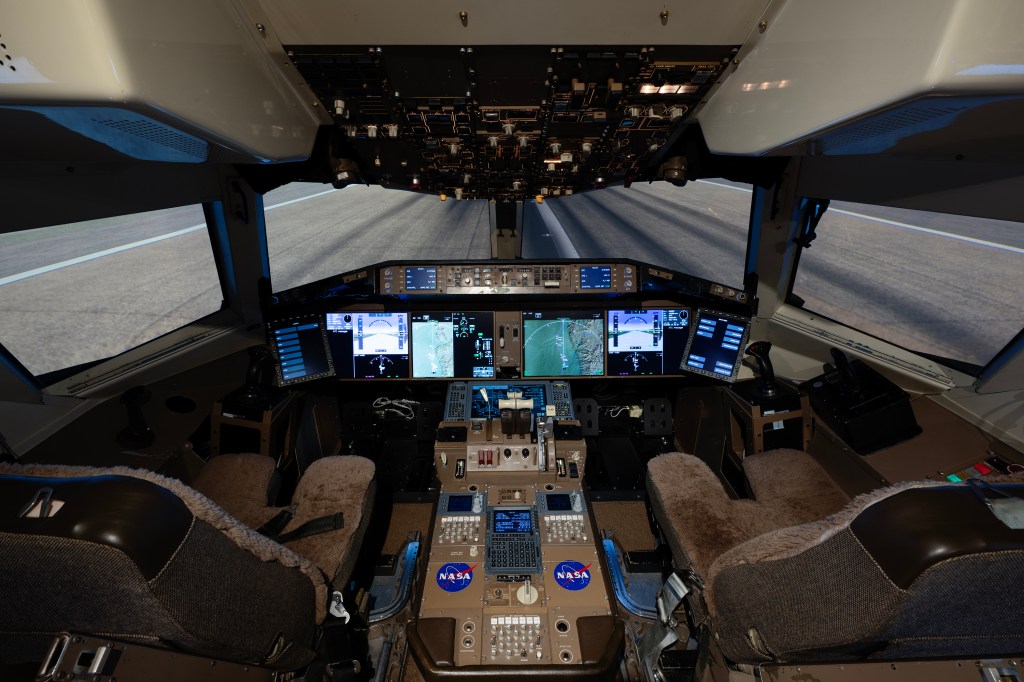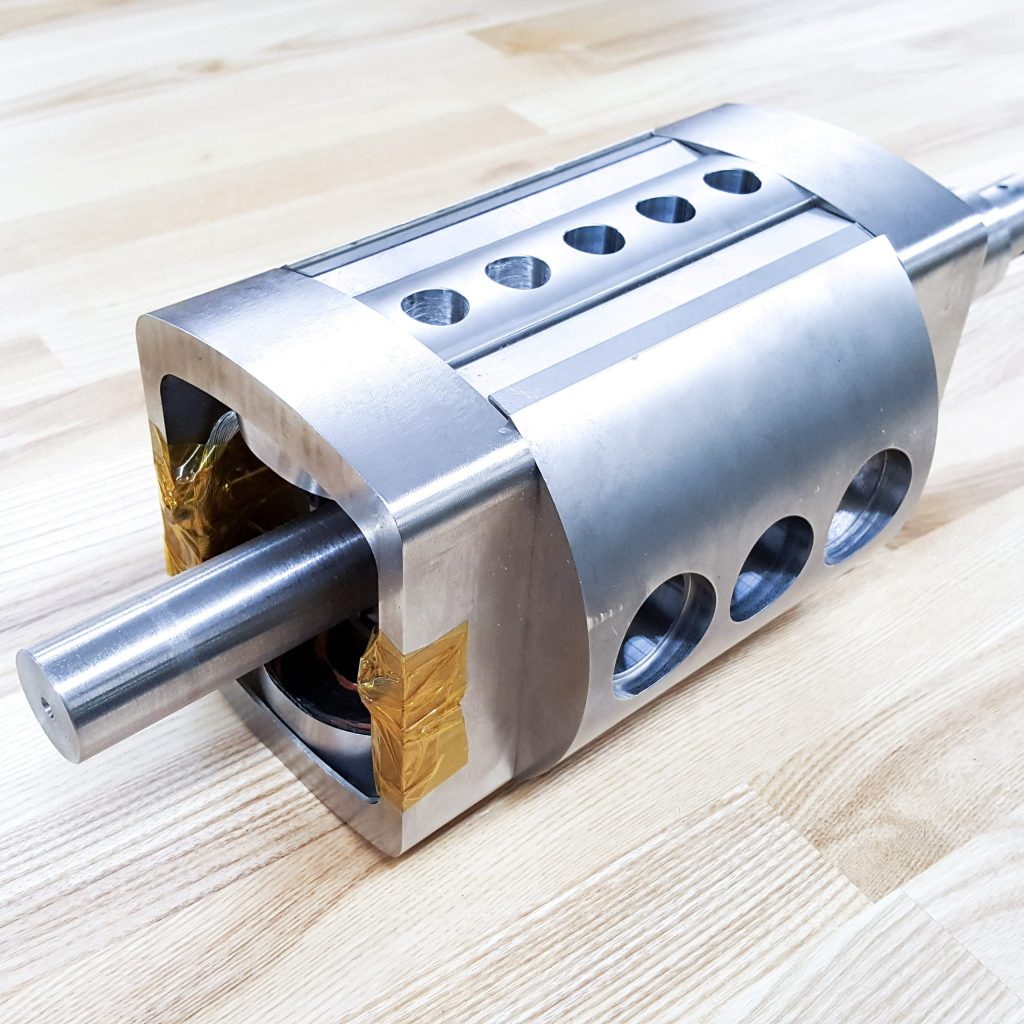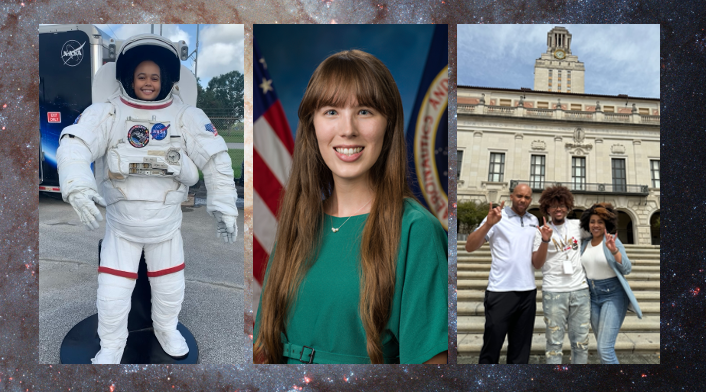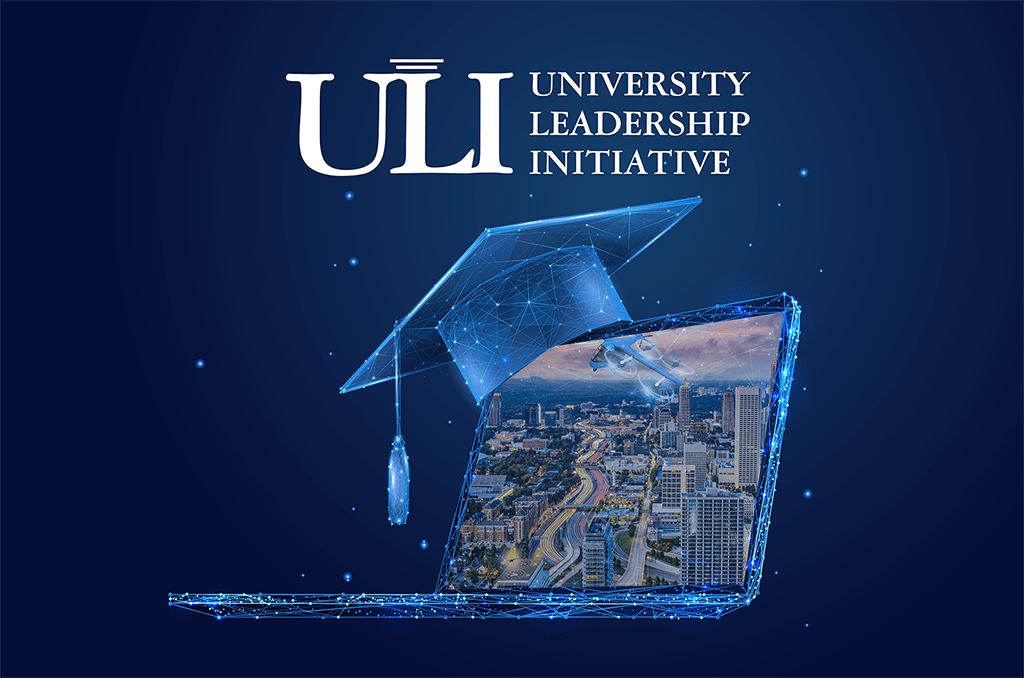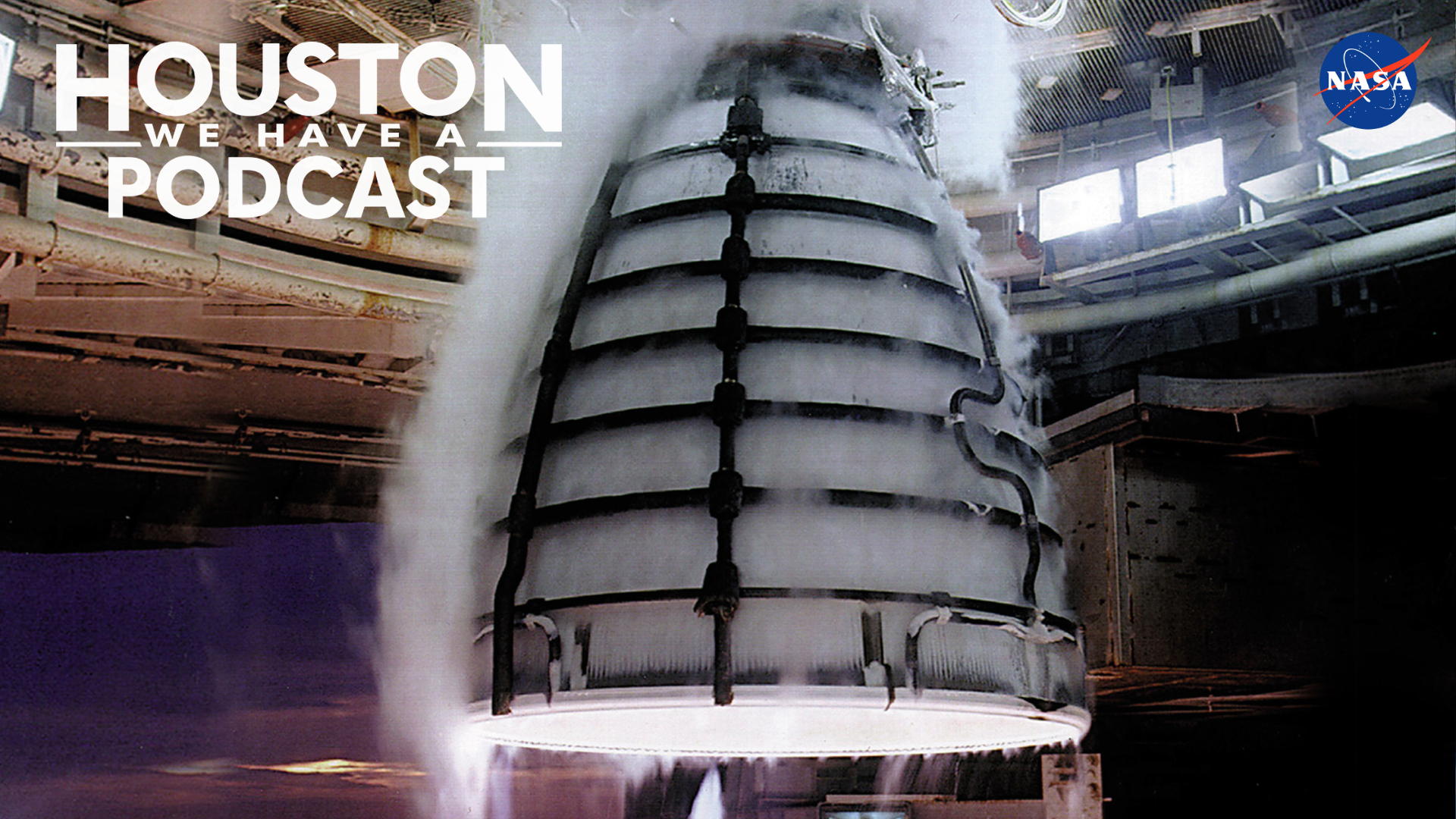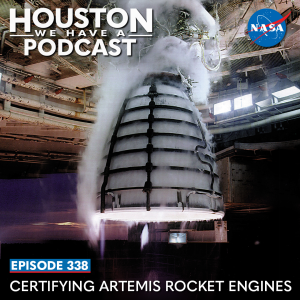
From Earth orbit to the Moon and Mars, explore the world of human spaceflight with NASA each week on the official podcast of the Johnson Space Center in Houston, Texas. Listen to in-depth conversations with the astronauts, scientists and engineers who make it possible.
On episode 338, experts from NASA’s Stennis Space Center discuss the facilities that support RS-25 engine testing for the Space Launch System and future Artemis missions. This episode was recorded on May 3, 2024.

Transcript
Host (Gary Jordan): Houston, we have a podcast! Welcome to the official podcast of the NASA Johnson Space Center, Episode 338, “Certifying Artemis Rocket Engines.” I’m Gary Jordan and I’ll be your host today. On this podcast, we bring in the experts, scientists, engineers, and astronauts, all to let you know what’s going on in the world of human spaceflight and more. NASA is returning humans to the Moon in a sustainable way with Artemis missions. The work we do will set the course for a future of humans on the lunar surface. To get to the Moon, NASA is using the Space Launch System, or the SLS, a massive rocket capable of delivering humans, elements of the Gateway lunar space station, rovers, cargo, and more to lunar orbit and the lunar surface. The SLS main engines, the RS-25’s, have heritage back to the Space Shuttle Program.
To achieve our exploration goals more rapidly, the first four Artemis missions will use RS-25 engines from the Space Shuttle Program that have been upgraded to increased performance. Now, after those first four missions, what happens? Well, NASA’s main contractor for the engine, Aerojet Rocketdyne, was tasked to come up with a more sustainable approach to RS-25 manufacturing and potentially increasing performance even more. NASA worked with Aerojet Rocketdyne to rigorously test these engines at NASA’s Stennis Space Center in Mississippi at the Fred Haise Test Stand. And recently, they completed a gauntlet of 12 tests as part of a certification series. Though many more tests proceeded this final stretch.
On this episode, were joined by experts from NASA’s Stennis Space Center to focus on the tests of this certification series. Joining me remotely is Chip Ellis and Bradley Tyree, RS-25 test project manager and test conductor respectively, to talk about the Stennis Space Center’s test facilities, and the latest certification series that sets us up for continued exploration of the Moon. With that, let’s get right into it. Enjoy.
[Music]
Host: Chip and Bradley, thank you so much for coming on Houston We Have a Podcast today.
Chip Ellis: Yeah, really appreciate this opportunity to get on your podcast. Really looking forward to today’s conversation.
Bradley Tyree: Yeah, absolutely. Thanks for having us, Gary. I’m super excited to be here.
Host: Super excited to have you. We were talking a little bit ahead of this. You guys are the first guests that we’ve had on the podcast—we’ve done well over 300 of these—but the first from Stennis. So I’m very curious to get into your roles, what you do at Stennis, and then the center in general. First though, for our listenership, introducing our listeners to you. Chip, why don’t we start with you? You are the test project manager for the RS-25 testing there. But can you tell us a little bit about yourself and what in life led you to become the RS-25 test project manager?
Chip Ellis: Well, I’m the old guy in the room, so that’s a long story.
[Laughs]
Host: And we’ve got time.
Chip Ellis: I started off as a co-op student. I was in college and went to co-op interview days and saw NASA on there and I’ve always loved space and dreamed about being an astronaut. I’m like, “That would be really cool to work for NASA.” So I checked off the box to interview for NASA, went and did my interview, and a few weeks later, I got a call, said, “Hey, you got a job with NASA, you can report down to Bay St. Louis, Mississippi.” And I’m like, “Where?” Because I’m thinking NASA is Kennedy Space Center or Johnson Space Center. Or Marshall Space Flight Center. Now, I lived in Mississippi. I was going to Mississippi State University. I’ve never heard of Stennis Space Center. And so I showed up at Stennis Space Center in electrical engineering and began working as a co-op student. And I did six semesters as a co-op student. So a long period there. And then NASA was actually under a hiring freeze at the time I graduated. And so I actually came back after graduation still as a co-op, and they finally got out of that hiring freeze and hired me.
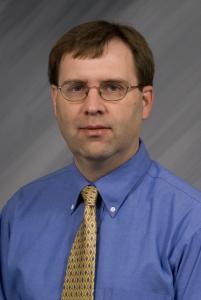
I began my work with NASA in what’s now called our E Complex, testing small subscale things. And we were actually building it at the time. And I did that for a few years. And then I got the opportunity to move out to what we call our AB Complex, which is our large propulsion stands where at the time the space shuttle main engine was being tested on our A-1 or A-2 and our B-2 test stands. So I had the opportunity to go out there and train for a period of time and trained as a data instrumentation engineer out there doing that. And really loved it. Worked a lot of long hours. It was exciting days. Everything we were doing was to support launch. And so we were testing, at times, three times a week on those test stands. So really high activity. I did that for several years and then moved back over to the E Complex for a little bit and worked a program called IPD at the time. And then I had my firstborn son, and that’s when my life took a major change. He was born with severe special needs. And the whole testing environment, working multiple shifts, was something I couldn’t do anymore. And my informal mentor, Ronnie Rigney, didn’t know who I was at the time, but had heard about me and gave me a call and said, “Hey, would you like to come back over and work more SSME, but work at more from the contract side, help manage the contract?” He needed an electrical person that understood what was going on in the data world to help on some projects they were doing. And I said, “I’ve never even thought about that. I’ve always thought I’d be an engineer forever.” And so I went over there and started doing that, and I loved it. Really enjoyed managing contract and still doing technical. It gave me a lot more freedom to be able to take off the times I needed to take off for my son.
So I did that for several years. And then there was a big change at that time. All of the test complex was run by Aerojet Rocketdyne, and at Stennis, there was a major change, and NASA realized that it was, with the change in the space environment and a lot more commercial entities coming in, NASA needed to be the ones running our test stands so that we could test other engines other than an Aerojet Rocketdyne engine. We wanted to be able to test things for SpaceX and Blue Origin of the world and evolutions of the world, all these different companies. We wanted to be able to do that. And we knew we couldn’t do that if we had a competitor running the facility.
So NASA took over the AB Complex at that time and began to operate the facility. And Aerojet Rocketdyne was just a customer with an engine, just like anybody else would be for us. And so in that timeframe, I moved up into the project management world, managing a couple of projects, the Rocket Propulsion Test Project here at Stennis Space Center. Then I moved into the exploration upper stage when it was first announced that we were going to test the upper stage here at Stennis. I was project manager in the beginning on that. And then an opportunity arose for me to apply for the project manager for RS-25. And I did that, and I got that job. And so I’m back in the SSME world, cause RS-25 is just SSME engine advanced a little bit. So I’m back at my home. Originally, the A-1 test stand is originally where I started off. So that’s how I got here.
Host: Wow. And very interesting path. But I think, you know, a few things stick out to me is, I think what’s apparent, at least to me, is you’ve had a quite a career at Stennis, but it was diverse enough where it seemed like it provided you a lot of interesting opportunities. You continue to learn a lot. And something that is clear to me, and I want to hear it from you, is you seem to love the work at Stennis. You seem to love what goes on there.
Chip Ellis: Yeah, it’s exciting. Stennis is a unique center. All of our centers are unique, but Stennis is a very small center. And so at Stennis, there’s not an employee here that doesn’t do a lot of jobs. You get a lot of opportunities, you meet a lot of people. Like we personally know our center directors. I was at another center, at Kennedy or something, I believe it was a Kennedy. And Bob Cabana was Center Director at the time, and I was there on a trip walking down the hall, and I spoke to him, and the person I was with was like, “How do you know Bob Cabana? I’ve never even got to meet him.” I said, “He was at Stennis. And we know everybody here.” We’re small. So we get to know everybody, but we also get to do a lot of different things. You get a lot of opportunities. Stennis is a very close-knit family, and people are always looking out for each other.
Like I mentioned, I had the special needs son born and the family here helped me through all that and gave me other opportunities. Let me go change jobs so that could better take care of him. And so it’s a really close-knit family and we all love testing rockets. That’s what we do here at Stennis. That’s our primary function, is to test rockets. And so what’s exciting, especially now, we’re getting all these new commercial entities coming in and some of them are startups, so they’re learning, some of them are much more advanced, have been doing this for a while. And so we get to learn with them and the things they’re testing, and then we get to continue doing the things we’ve done for so long with the RS-25. We just got a ton of experience.
So we get to do cryogenic propellants, we have the most storage of that than anybody other than Kennedy for launch. And so that’s a whole other area. Just managing cryogenic propellants and getting to work with that is exciting. There’s just so many different aspects here at Stennis, just from the NASA perspective, not to mention our federal city, which is another piece of Stennis history we can talk about later. But the NASA society, there’s so many opportunities and so many new people coming in and being able to, like I said, I’ve been here 30 years. I’m able to see new people coming in now and see that they come in wanting new opportunities. When I came in, like I said, I thought I’d just be electrical engineer forever, not ever change. If you’d asked me 30 years ago if I would ever be sitting here doing a podcast as a project manager, I’d say you’re absolutely crazy. There’s no chance I will ever do that. And here I am, just through the different opportunities that were given to me being here.
Host: Very happy to have you here, Chip. And I think all of the things you talked about of what’s going on at Stennis and some of the things going on, I cannot wait to dive into that. I first though, want to go to Bradley and hear a little bit about your story. What exactly you do as the test conductor for the RS-25, and what led you to where you are?
Bradley Tyree: Yeah, absolutely. So it’s going to be pretty hard to follow up Chip’s. Got a long career out here at NASA. I actually started out here in 2018, and I was born just down the road in a small town called Picayune, which is, I don’t know, probably 15 minutes from Stennis Space Center. As Chip mentioned, Stennis has been out here for a long time, and it’s had a lot of influence on the surrounding areas. So actually, my great grandfather worked out at Stennis supporting the SSME program actually as a mechanical technician. So he got to actually turn wrenches on the SSME back in the early ‘80s, late ‘70s And so I’ve kind of got some family ties to the area. But I was born in Picayune and went to high school in Carriere, which is just next to it. Ended up going to the local community college, Pearl River Community College. And then from there went to Mississippi State University and got my degree in aerospace engineering and graduated in 2018. I remember at the time, my roommate, he was telling me, “Hey, you know, they’re hiring mechanical engineers down at Stennis Space Center. You ought to, you know, put in for a job.” And I was like, “Wow, that’s a really great opportunity. I’ll go ahead and apply.” Especially because my family, you know, I could be close to home and get to do what I went to school for, what I was genuinely interested in. So, I started out here in 2018 on the contractor side, working for S3, working at E Complex, like Chip mentioned, which is one of the smaller test facilities. But it’s more geared towards research and development. So they test a lot of private space company’s hardware, anything from full up engines to maybe just valves or igniters just to dial in flow rates or pressures and temperatures. So that was a lot of really good experience for me as a young engineer who had never done anything but, you know, dove into the books and done homework and took tests and did design projects. This was like real hands-on work that I never could have imagined myself being able to do so early in my career, you know, here I was as like a 24-year-old young engineer and being so-called hit with the fire hose of information. Cause at the time, there was so many different projects happening and we were jumping from, you know, different areas, testing all of this different hardware. So that was really interesting.
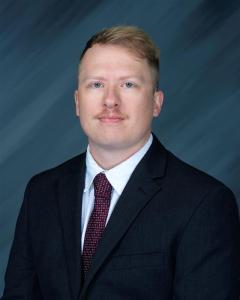
And then I did that for a couple years, and then I actually jumped over to NASA in 2020. I moved over to the A-1 test stand where I started doing RS-25 testing. It wasn’t exactly like jumping straight into the role of test conductor there. There’s a lot of experience has to be gained before you’re ready to perform that role. So I started out doing propellant transfers, liquid hydrogen, liquid oxygen, which involves being intimately familiar with the systems, operating them, maintaining them. You get really good at that, and now it’s time to go sit in the test conductor seat where you basically drive the whole test. So that was, you know, definitely a great opportunity for me. I gained a lot of experience really fast, and here I am, you know, six short years later after first stepping into Stennis Space Center and I’m helping run the RS-25 test. It’s pretty crazy. So I guess that’s pretty much where I started and how I got here. And we can dive in as soon as you want to.
Host: Yeah, that’s perfect. And you know, I resonate with both of your experiences. Chip, starting off as a co-op. I, myself was a co-op and Bradley, with your experience of just, you know, it seems like there’s an incredible amount of trust and opportunity that’s given in a very short period. And that seems to be something at NASA, really truly something that’s part of the culture is just allowing folks that are brand new to just dive in and learn. And I think that really helps to learn as fast as possible. So I definitely resonate with both of your stories. It’s awesome to have you both here. What’s apparent to me, you know, I think we’re getting a taste of what this Stennis Space Center is. And Chip, you sort of helped to lead us off with some of these thoughts, but really it seems like a lot of testing is done.
We’ve talked about various test stands. We talked about cryogenic propulsion storage. There seems to be multiple elements of what the Stennis Space Center is. Chip, if you’ll help us to dive in a little farther into that, we’re going to talk about a couple stands. I think A-1, or Fred Haise Test Stand is one that we’ll talk about because we really want to dive into this RS-25 testing. But there seems to be other test stands. And those test stands have evolved over time. Can you give us a sense of what’s happening there at the Stennis Space Center? What are the different test stands and just a taste of what life is like there?
Chip Ellis: Alright. Sure. I give a little bit of history just to show how Stennis got here, but it goes when Kennedy said, we’re going to go to the Moon, one of von Braun and his team were looking at ways to test those large rocket engines, the F-1’s and the stages. And so in 1964, they started construction here at Stennis Space Center. It was strategically chosen, we have access to the Pearl River, which can directly connect us to the Gulf of Mexico and allow us to get to Kennedy Space Center with a stage or a flight vehicle. But also connects us to the ability to get to Michoud Assembly Facility, which is just outside of New Orleans, which is where they built the Apollo spacecraft, is where they’re building SLS now. So, back in the ‘60s, we had that waterway. And so Stennis was really small communities at that time, a lot of little bitty small logging communities, a lot of swamp land. But it had access to the Pearl River. So they actually made a canal system here that’s about seven and a half miles long, that connects to the Pearl River through a lock system, just like a Panama Canal lock. And that is how we get spacecraft hardware engines, full vehicles, up to Stennis to test, and then back down to Michoud, or down to Kennedy for launch. But that all started in ‘64. They finished building in 1967, on the A-1 test stand and A-1, its first goal that it was built for was to test the second stage, the S-II stage, which is a cluster of five J-2 engines. That’s what A-1 was built for.
A-1 has a twin sister stand, called A-1. A-2 was the same thing. It was going to test the S-II stage. And then we have a much larger stand called the B-1, B-2 stand. So it’s two stands built together. Those stands were built to test the first stage of the Apollo spacecraft. And so they had the five F-1 engines that they tested there. And stories I’ve always been told is when they tested it, it registered as an earthquake over in Mobile, Alabama, which is quite a ways from us. So I’ve seen pictures of that test. I’m not that old, so I never saw it, but I’ve worked with guys that were here during that. And it was just an amazing time building. And so we went through the Apollo program, there’s a famous quote from one of von Braun that says, he said, “I don’t know yet what method we will use to get us to the Moon, but I know that we’ll go through Mississippi to get there.” And so every Apollo spacecraft that ever flew came through here. Every space shuttle that ever flew had its engine certified here. And RS-25 now continues that legacy of every flight RS-25 is going to fly. It’s going to be tested here at the Fred Haise Test Stand. So as Apollo program ended, and then Space Shuttle Program came into being, and they were looking at where do we test the space shuttle engines? And so they converted the A-1, the A-2, and the B-1 test stands from stage test stands to single engine test stands. So that meant we added a liquid hydrogen tank and a liquid oxygen tank to all three of those test stands. And then we utilize our barge system to get propellants to those tanks. And so we have a NASA marine fleet.
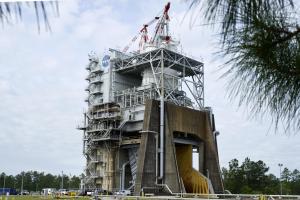
Chip Ellis: And so we have a NASA marine fleet. We have six liquid oxygen barges and three liquid hydrogen barges. And these barges are really large. So like a liquid hydrogen barge, we’re looking at like 270,000 gallons of liquid hydrogen. And a liquid oxygen barge is like 105,000 gallons of liquid oxygen. This barge system is what’s allowed us to do long duration testing. So the run tanks we have in the test stands can only go about 350 seconds of a test. A normal RS-25 test is 500 seconds. So without these barges, we aren’t able to make these long duration tests. So Stennis main thing during the shuttle program was testing the SSMEs. Everything at Stennis pretty much was here to support that program. And then as shuttle ended and other things began to, well, actually during the shuttle program, there was a need to test some small components. So we had the Challenger accident during shuttle. So they actually started looking at let’s come up with an advanced solid rocket motor. And they actually started building a facility out here at Stennis is to test the advanced solid rocket motor. They were also looking at changing from the Aerojet Rocketdyne pumps to the Pratt Whitney pumps. They needed places to test components. So they started building what it then was called Component Test Facility. It’s now known as our E-1 test stand. So funding ran out on a lot of those, they decided not to do. And so we at Stennis are really good about taking what we’ve had and figuring a way to reuse it. And that’s essentially how E-1 test everything at test.
Now we took what was started and then we would build up as we could build up. So now we have a facility that has incredible capability, ultra-high pressures for testing. Started off as testing turbo pump components. Now it actually tests full up engines. We’ve done a lot of full up engine testing. And so a lot of our startup companies will come out there into that complex, which is grown now. It’s not just E-1, there’s an E-1, E-2, and an E-3 and an E-4 facility out there. And so they’ll come in at different stages, and depending on what stage of development they are, depends on where they locate. With E-1 being the main place for full up rocket engine testing, them. But they’re short duration, whereas the A-1, A-2, B-1, B-2 testings can do long duration testing.
So those built up over time. And then we get to the Constellation Program and they build the A-3 test stand, which is a vacuum chamber test stand, was built to test J-2X. And of course, Constellation morphed into SLS. And so for SLS, we revived the B-2 test stand to make it where it could test the core stage for SLS. WE did what we call the Green Run of the core stage for SLS over on a B-2 side. And the B-2 side is now being converted over to test the upper stage, exploration upper stage, for SLS. And so that’s kind of a brief history on how things kind of grew and where we are and why we’re so diverse now. So it’s been baby steps along the way and there’s some big steps in there to get to where we are in testing for a lot of different people now. We test for a lot of different companies now.
Host: Yeah. And I kind of wanted to dive into that a little bit next, but just to summarize, I mean, Mississippi, from a location standpoint seems to be a perfect place for the reasons you talked about in terms of transporting that, but also the variety of test stands. It seems like part of the reason for all of the different ones is just there’s different needs when it comes to tests. Whether you are testing on a small scale and you don’t need a, you know, as many capabilities you go to some of the smaller stands until you get to something like an A-1 where you need to fire an RS-25 for the full duration of what would be an SLS launch, in which case you need the infrastructure and facilities in order to support that. So you have these very capable facilities there in order to conduct these tests that are not only attractive for NASA needs, but for commercial needs. So that’s sort of where that growth is, is built in and those capabilities at Stennis.
Chip Ellis: Yes. Yeah, that’s a very good summary of where we are. And then now we have a very diverse, we’ve done testing for SpaceX, we’ve done testing for Relativity Space. Relativity Space is now leasing some of our test stands. Stennis, back I don’t even know how far back now, 20 something years, got really involved with Space Act Agreement. When shuttle was slowing down, we began only testing on the A-1 and A-2, and we actually went into a Space Act Agreement with Aerojet Rocketdyne for them to lease out our B-1 test in to test the RS-68 engine. And that lasted for 20 plus years. And so Stennis has got really good at SpaceX and understanding them and looking at where did we have availability and how can we partner with industry. So now we actually have agreements with Relativity Space, Rocket Lab, Evolution Space, and I believe that’s the main current ones we have in place right now to utilize some of the stands that we may not, NASA currently doesn’t have an immediate need for. NASA’s primary mission right now is s SLS, which is our Fred Haise Test Stand, what we call A-1 and our B-2 test stand. And so our E Complex, we’ve got E-4 and E-2 in agreement with Relativity Space, and then on E-1, E-1 is actually a multi-celled facility. It has three original cells and a sort of a fourth cell for smaller things come in. And then E-3 is our other place that’s probably our start off facility is our smallest facility. You can have a lot of folks come in and they may test for one day and then they’re done. They get the data they need, or they may come in and test for weeks. But we can do really fast turnarounds at E-3 and it’s got a couple of positions there.
So yeah, we’re very well positioned now and working great with partnerships with the private industry and the space sector and anything that is a part of what NASA does, we can partner with them to test different things. So it is not always got to be a rocket engine. There have been some other things come in that are part of what NASA’s mission is that need to do. During shuttle program, we needed to come in and do some testing that wasn’t a rocket testing, but it needed cryogenic fluid and we have expertise in cryogenic fluid, and we’ve got a lot of it available to us. So we’ve very adaptable on our different test stands and what we can do.
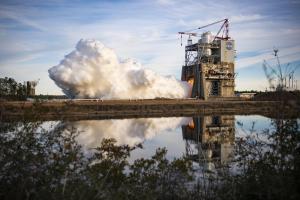
Host: Yeah, understood. Now, in terms of, you know, we talked about the different tests and there’s variety of users now, and it seems to be growing. Bradley, if we go to you just to understand in general, you know, ultimately, we’re going to narrow down to this RS-25 test that you both have been working. But in general, take us through a day of what a hot fire test is. I guess not necessarily just the day though, right? There’s planning that’s ahead of time in order to prepare for a test. And then what really it looks like throughout the tests and what exactly as a test conductor you are doing.
Bradley Tyree: Sure. So I’m going to assume that you’re talking specifically about a test on A-1, because all of the hot fire tests are different. And I’ve actually conducted tests at multiple test stands, such as E-1. So a typical hot fire test day for A-1 actually starts really more like 48 hours before the hot fire day because we have electrical technicians and mechanical technicians that have multiple, I would say couple days of setups that have to happen on some of our data acquisition systems and things like that. So it actually starts a couple days before. But morning of test, so we get everyone into the control room pretty early, as early as 5:00 a.m. We have controls engineers on station, and they’re doing their setups for tests, and they’re reviewing things like our sequencer, which drives the sequence for the hot fire. And that’s all programmable and it gets changed for whatever specific test we happen to be running, what data we’re trying to capture. So we’ve got our controls engineers there early. We’ve also got our electrical and mechanical technicians on the stand, and they’re doing their day of test stand setups. So that involves opening up certain cryogenic valves, you’re preparing systems. We go ahead and get our transfer engineers onto the console as early as sometimes 7:30 in the morning, which they’ll hop on console right after we have like our pretest crew briefing, where we get everybody in the room and kind of lay out the plan for the day, the objectives we’re trying to meet for this specific test, kind of get an idea of where everybody’s going to be and what time we coordinate all that activity. And then we break out of this pretest crew briefing. We get our propellant transfer engineers on station, and that usually starts with liquid hydrogen. So we get that engineer on station and we start chilling in our systems because as you know, liquid hydrogen’s very, very cold. So it takes a good deal of time to start conditioning the facility to deliver that liquid hydrogen to the engine. And that, you know, that takes hours.
So we get liquid hydrogen on station, then we start getting liquid oxygen transfer engineer on station. They start doing the same thing, chilling in the systems, getting ready to basically fill the run tanks and then drop that liquid oxygen and that liquid hydrogen down to the engine preparing all those facility piping systems. We call it chilling, but it’s actually very opposite of what you think of whenever you think we’re chilling. Everybody’s really busy. They’re, they’re kind of running around everywhere. So that gets us into propellant drop. And all during this we’ll have our test conductor at the console, and they’re doing things like bringing up the pneumatic and the hydraulic systems required to drive the RS-25 engines, valves, and to get us into certain positions to eventually get us into our hot fire test. And this is, like I said, this is multiple hours before we’re even ready to “push the button” and start the engine. So it’s a really busy day for test day, but typically spirits are high. You know, everybody’s excited. It’s a big adrenaline rush. Everybody’s on station and we’re all it kind of counting on each other to make sure that we are doing the best we can to make sure that the facility’s prepped, the engine’s prepped, we’re ready to get this test going. We’ve got all our data systems ready to record. We’ve got our high-speed video systems. We’ve got cameras everywhere. We’re watching everything because at the end of the day, that’s what we’re testing for. We’re testing to get the data and deliver it to the customer. So it’s a high adrenaline, high energy situation. And it feels like it lasts for days, but that buildup happens. So we get into our, you know, final 15 minutes or so of right before hot fire, we’re bringing up our high-pressure industrial water system. At this point we’ve kind of cleared everybody off of the test stand. When we bring up that high pressure industrial water system, the test stand is shaking because it’s almost 200,000 gallons per minute of water that we bring up to cool the “flame bucket.” The deflector. Which is just below the engine. So the test stand is shaking. We’ve got everybody on station, we’re ready to hit the button. We’re doing our call to stations. We’ve got customers on consoles, we’ve got avionics, we’ve got data acquisition system engineers. Everybody’s there, everybody’s ready. Now we’re ready to do the hot fire test. So we make sure we do our last call, get the thumbs up from everyone, make sure everything looks good, and we hit the button and we test.
As Chip mentioned, a typical RS-25 test, it’s about 500 seconds. So you hit the button and you hold your breath for about 500 seconds as that engine goes. And you make sure you’re watching your data systems, you’re watching your video, you’re watching your temperature, your pressure, you’re making sure everything goes right and everything looks healthy so that you get the best data you can. And then that engine cuts off and everybody lets out their breath that they’ve been holding in. You start processing the data, you start getting the facility back into a safe configuration so that you can get your technicians back out there and they can start securing systems. You start getting all the pressure off of everything, cause at this point, everything is pretty high pressure, ultra-cold temperatures because of the liquid hydrogen and the liquid oxygen. So you’ve got to get that test stand, basically it’s like hitting the reset button. And that takes several, several hours so that you can get the stand back into a configuration to do it all again. You know, maybe the next week, maybe the week after. But yes, that’s like a high-level of what a typical test day looks like on A-1.
Host: Do you find it relatively routine or does every test sort of have its own flavor to it?
Bradley Tyree: I will say that the vibe out at Stennis sometimes is, you know, oh, we we’re testing the advanced upgraded SSME, right? We’ve done this plenty of times, but I can tell you after doing it at least 20 times, it does not feel routine at all. It feels like, “Oh, wow, I hope everything goes right.” Because, you know, we have all kinds of opportunities that come up in between tests such as, you know, hey, let’s go tweak this valve to try and get this kind of response out of it. Or we may have a leak on one of the piping systems that we have to fix in between tests or there’s so many different components that go into it. I don’t think we’ve ever had two tests back-to-back where we didn’t have something to go fix or adjust or maybe modify for a better performance the next test. So I wouldn’t call it routine at all.
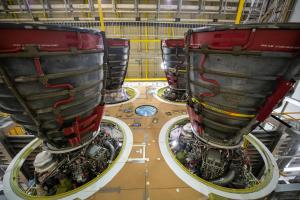
Host: Yeah. And that sounds like it’s kind of a benefit of having to do all of these different tests, is you kind of get better at testing. Just the repetition of that. Bradley, you talked about that was for A-1, and that was an example for that. Just in general, you know, if we were to look at a different stand or a different test, is it fair to say that some of the other ones that are outside of A-1 for a 500 second test firing of an RS-25, that some of the ones that the other tests are a little bit smaller scale? Or is it just different?
Bradley Tyree: I would say it’s smaller scale, but it is different. So I’ll speak from the perspective of E-1 because I spent a couple years there whenever I started out here. E-1 is special because it has ultra-high pressure capabilities. It also has multiple propellants. So you have things like liquid oxygen, liquid hydrogen, liquid methane, rocket propellant, or like basically refined kerosene. You’ve got liquid nitrogen storage. You have pumping systems over there that allow you to pump up your liquid nitrogen to ultra-high pressure gaseous nitrogen. You have liquid hydrogen pumps that allow you to get ultra-high pressure gaseous hydrogen. And I like to think of E-1 as it’s almost…it’s very adaptable, right? So when you think of E-1, in between tests, you’re basically stripping the—maybe we’re testing, for example, in cell two at E-1—you’re stripping that cell down and you’re building it all back up for whatever customer that comes through that wants to test that specific engine or hardware. So it’s very dynamic. It’s ever-changing, it could look different. If I go out there today, it may look completely different two weeks from now just based on whatever project happens to be testing in that area at E-1.
Also, the tests are a little different. You may be targeting, whereas in RS-25,we’re looking at 500 seconds and we’re trying to get certain power levels and mixture ratios. You’re doing that on a much smaller scale at E-1, and it’s very quick turnaround. And you’re also sitting right next to your customer who may be giving you requirements on the fly. You know, hey, we just ran this test, and we liked this specific data. Let’s make this change to our sequence. Let’s increase this pressure, let’s decrease this temperature and let’s run it again, you know, in 20 minutes.
So it’s very, very dynamic. Very “got to get up and go.” But it’s a lot of fun and you get a lot of experience really quickly. It’s really cool to be on the research and development side of that and be tweaking the requirements for your program on the fly. And you get to work with the customers and you get to see, you know, how they react to the data that you’re delivering them real time. It’s a lot of high fives and hugs and a good time at E-1. It is just a little different, it’s a little smaller scale there. As Chip mentioned these, some of the durations that over there, five seconds right. You know, three seconds. And it’s a lot of fun. It’s different, but I would say it’s still a lot of fun. I enjoy it a lot.
Host: Yeah. And I’m sure every customer has a different flavor and a different approach to different things. And you taking that approach of rolling with the punches seems to be just the way of business. Now let’s switch gears though, back to A-1. Let’s talk about the Fred Haise Test Stand for a second. Chip, if you don’t mind diving into this particular test stand, cause we’re about to talk about the RS-25 certification series. Let’s talk into the capabilities, what’s going on particularly at this stand that sets us up well for the RS-25 certification series.
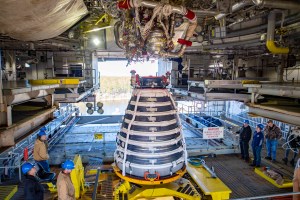
Chip Ellis: Yes. So the A-1 test stand, like as I mentioned earlier, it was originally designed for stages and then we adapted it for shuttle engine. And so as Bradley mentioned, RS-25 is essentially the shuttle engine with just some modifications. And so we’ve been testing essentially the same engine for decades now. So we’ve got tremendous experience doing that. But at the same time, we’re doing new things, particularly in the RS-25 certification, one thing we had to do there that we hadn’t done in my career was do gimbal testing on an SSME. We had to come up with a new thrust, what we call a Thrust Vector Control System, a TVC. That’s what allows the vehicle to steer. It rotates the engine around in a circle. And so for the new things, like the new ducts on the engine and the other new components on there, they needed to see how they’re going to react in flight. And so we needed to gimbal it to make sure they could do that full range of motion. So we would do some circle patterns, some saw tooth patterns, while we’re hot firing this engine. That was a major thing. So we spent a lot of time having to go build up that system because it didn’t exist anymore. It hadn’t existed for quite a while. And so that was a new capability, or I guess a capability restored to that test stand. But the test stand itself can handle 1.1 million pounds of thrust. For RS-25, SSME type, we’re essentially looking at about 400,000 pounds of thrust at sea level, which is, we are literally at sea level here down to south Mississippi. And it’s about a half million pounds of thrust once it gets up to altitude in a vacuum. And so that’s what we’re looking at thrust wise.
So Stennis easily handles the thrust of that engine, but as Bradley mentioned, that engine’s putting out an exhaust of around 6,000 degrees. And so we’ve got a cool it. So we’ve got this massive flame bucket. The engine sits on level five of our test stand and our test stand, when we say level, it’s almost double a normal story of a building. So we’re pretty high up there. And all the five levels below that is just one massive flame bucket, which the best way to describe, it’s a massive sprinkler system. It’s a big metal bucket that has thousands upon thousands of holes drilled into it. And when we cut that water on it, he mentioned floating about 200,000 gallons a minute. That’s cooling that off so that we literally don’t melt the flame bucket. If we ever do have an issue with the water not flowing, and we’ve experienced this, we’ll have some holes plug up and we’ll literally melt part of the flame bucket. And this thing’s made of one inch steel is what the flame bucket’s made out of. So it’s pretty neat to go out there and see, you realize how much power you’re dealing with when you’re testing one of these engines to melt steel that quickly is pretty amazing. And there’s just so much power in there. And the stands were built with so much forethought. The guys that built it, I’m always amazed, I’ve been here 30 years, and I don’t ever walk out on that stand and not be amazed at what they built and how we’re actually still using most of it. And like Bradley was talking about leaks and stuff happening. I mean, we we’re still testing with stuff that’s been there for 50 years. We’re testing with things that put man on the Moon originally. And the systems by and large are still working. And it’s amazing. And it does come with its own problems. Valves that were built back then, the vendors aren’t even in business anymore. And so we have an incredible component facility that is rebuilding, reworking these valves. There’s an incredible team in the background. Bradley described test day of what we call our test crew on the team. But the behind the scenes, all the people that have to go into getting us there, the welders we have, the carpenters, our component shops, our high pressure gas facility, this pumping up our gases per test, our cryo facility that’s getting our propellants into the barges, and then our tug operator that gets barges over to us and then our water plant that’s pumping out of this 66 million gallon reservoir of water so that we can cool that bucket. It’s just an incredible team that goes into testing.
If you ever watch one on Facebook, you’ll see the test. Sometimes you’ll get a shot of the control room. It’s just a such a small subset of what it is. As we’re talking, there’s no way for you to visualize how big this is. Bradley and I are sitting here visualizing, but as he’s in the control room, he’s a half mile away from the test stand. The water plant, it’s a half mile away from him. The gas house is probably, as a crow flies, is a half mile away. It’s just a massive complex for test and RS-25 versus the E Complex he talked about. It’s really close and compact. Everything’s right there. They have their own water systems. Everything’s in that test stand. So the E Complex is a much more complicated, A complex is much larger because of what it does. And so there’s a quite a bit, you don’t just move from one to the other. Bradley’s had the benefit of testing at both. But it’s a different experience at both of them. You have to look at the nuances of a massive scale and then a small scale, but much more complexity.
Host: Yeah. Lots going on there absolutely. I wanted to dive into this certification series though now. Understanding the test stand now, understanding what you guys do and what’s happening at Stennis. The certification series, latest one was a series of 12 tests to certify the RS-25 for the fifth flight of the SLS and beyond. So give us a sense, Chip, maybe we’ll start with you and then we’ll go to Bradley on just an overall approach from the Stennis perspective of this certification series, how you guys worked with Aerojet and the program to really help to get us to a position where these engines are ready to go for future Artemis missions.
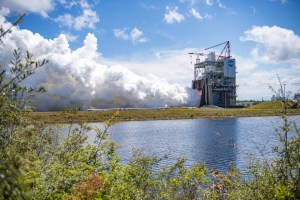
Chip Ellis: Yeah, sure. So Aerojet Rocketdyne is the manufacturer of the engine. They actually assemble the engine here at Stennis Space Center. The components are built literally all throughout the United States. Their headquarters, where they do most of their design engineering’s out in Canoga Park, California. And then the parts are sent here, they build it here and we’re not involved with that. It actually happens on a building here at Stennis but that’s all Aerojet Rocketdyne all during this, we’re working with Aerojet Rocketdyne, the Marshall engineers and space engineers getting the requirements and then making sure our facility can handle those modifying our facility if it can’t. And then each test comes with it is all specific requirements and they’ll be, as Bradley mentioned, you’ll be doing different mixture ratios, different power levels. They’re looking for making sure we’ve tested the engine at all the conditions it needs to test to fly and then exceeding that. So we’ll test up to 113% power level, but the SLS is only going to fly at 111% in its current configuration. But that’s making sure the astronauts are going to be safe. We will test to the extremes and verify that we are hitting all the limits. And that’s what a lot of our tests are during these certifications is checking all the boxes, making sure we’ve checked it at this condition, at this temperature locks your different, your temperatures can make a difference on the various systems. So we’ll check those off. And that’s what goes into a lot of the different parts of these different certifications we’ve done and why there’s like 12 tests in there. A lot of what determines is it good to fly and is it going to be safe for our astronauts? One of the key things there is how many times have you started it and stopped it? Because the roughest part of the rocket test is the startup and shutdown extremely dynamic during those two conditions. And so they have parameters on there that certain parts have to get so many starts, so many shutdowns, and then how many seconds do you get on them. So that drives a lot of where they determine how many tests do we need to do and how long they are. 500 seconds is our typical because that’s flight. We do a lot of our tests like you fly, that’s a motto we have here to make sure we’re safe. But we’ve also exceeded that. We’ve tested, I believe a 750 second test on RS-25, I think is our longest, don’t quote me on that one, but it is at the 750 mark I believe. But so that’s where the test series came from.
So we started off the whole program because there were 16 Space Shuttle Main Engines left over. And so those 16 engines are going to get us through the first four Artemis flights. But those engines had to be adapted, they had to make some changes. It got a new brain, it got a new computer that’s called the engine controller for doing it. We had to test every one of those in a hot fire to get them certified for flight. And so they’re doing other things with some new 3D printing of parts, changing up some of the ducts. A lot of the companies that made the original SSME weren’t in business anymore. They had to go out and find new vendors for things. And so with every new time you’re making something, you really need to check it out. And so that drove a lot of the restarting of production on the RS-25 components. And then that drove how they needed to go test the different components that they were going to do different manufacturing techniques on is it going to be flight worthy? And that’s another one, one of the big differences in what we’re doing versus over D complex, we’re testing for man flight, not r and d. And so the scrutiny we have on our data is from a lot more eyes and a lot harder because people’s lives are on the line with that. And that’s a big piece when you’re sitting in that control room, everybody knows that the astronauts depend on us doing our job right. And the astronauts just visited us here for one of our last tests in the search series, and that was pretty amazing to get to meet the people that are going to fly on the engine we’re testing.
Host: Chip, that’s perfect. Cause we’re talking about the certification series and the scrutiny is exactly as you were saying, we have humans flying on board. You have to make sure you’re testing to those extremes. And that’s why we’re going through these series of tests. Bradley, I’m sure you were part of those series of tests. I wonder though, in that last of the 12, at the very end, you talked about the emotions of just running a test and going through a gauntlet of them must be a whole different kind of emotion. But at the very end, at that last test on the 12th one where you completed that knowing that it was leading to a certification of a Moon rocket engine, were the emotions a little bit different in that test?
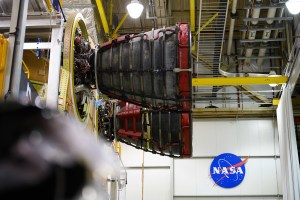
Bradley Tyree: Yeah, absolutely. I will say it was like, so we finished the 12th test of the cert series and there was a sigh of relief. You know, here it is, we’re at the end. And I’d be lying if I said there wasn’t some tears shed, some hugs. It’s a lot of emotion. It’s a lot of high energy in the control room right there. It’s like, “Wow, we did it.” You know, there’s high fives. It’s pretty, pretty amazing. It’s hard to describe the feeling. But yeah, definitely emotions were high and everybody was very excited. There’s nothing like experiencing that being at the end of the series and, you know, here we are, we’re done.
Host: Now, a fair characterization, correct me if I’m wrong is, you know, this series was for the certification of the engine itself, but that doesn’t mean that the testing stops, right? That’s of course just for the certification. Ahead of every flight, can we expect Stennis to do the same thing that we saw during the shuttle program where ahead of a flight, we’re just going to make sure that each one of those RS-25 rocket engines are ready to go and we can expect a series of tests prior to every Artemis mission?
Bradley Tyree: That’s correct. Yeah. And you’re right. That does not mean the testing’s over. That just means we’re ready to take that engine out and put the next one in and start towards the next series of tests on whatever engine we’re putting in the stand. So you’re right, it’s just a lot of, you know, blood, sweat and tears that goes into each test program, whether it’s a cert series or a retrofit series, that there’s a lot of work that goes into it. And I know a lot of people, you know, once we get through with that series, a lot of people feel a lot of relief. And it’s like, ooh, we did it.
Host: It must be such a wonderful feeling. I wanted to sort of end on this note and may maybe we can hear a little bit from both of you, but Chip, why don’t we start with you? You know, you’ve been at Stennis for a while. You’ve seen a number of tests and you’ve seen the center itself grow and change, particularly with the commercial providers. Just reflecting on that for a moment, just the change that you’ve seen at Stennis and looking forward to the future on what this means in terms of supporting Artemis missions and the commercial space industry.
Chip Ellis: Yeah, it has changed quite a bit over the years. It’s been amazing to see, and it’s exciting to see it was one thing to see shuttle program and we were just really busy with that and that was a single thing, but now there’s so much more opportunity. So it’s exciting for the workforce in South Mississippi because there are so many other people entering in the spaceflight business. Used to you, you either got a job with NASA and one of the shuttle contractors, or you didn’t do anything with spaceflight. And now there’s just so many more opportunities for people that so many of our team do that. We brought people that have worked for other people. Some of our people even go to other places. The rocket industry is a small family, really. There aren’t that many people that actually test rockets. And so it’s really exciting to see that growth and the more opportunities out there and to see that Stennis is leading the way in propulsion testing and making that capable for so many opportunities for other companies to come in and do that.
Host: I love that. Bradley, you’ve sort of rocketed yourself through the ranks of starting off and now becoming a test conductor in terms of what you’re looking forward to for some of the things coming up at Stennis, what are some of the things that come to mind?
Bradley Tyree: I can’t go into a lot of detail, but we’ve got a lot of projects happening at the E Complex right now and we’re getting ready for the next test series over at A-1. So looks like from now until the end of this year, I’ll be really busy supporting buildup and activation and testing of a lot of the different companies over at E-1. And I’ll be in my free time jumping over to A-1 getting ready. We’re doing a lot of facility upgrades over there, so we’re just getting ready for some more rocket engine testing. It’s a full-time and then some.
[Laughs]
Host: It’s so interesting talking to you guys, getting ready for more rocket engine testing. Like you guys just have just such an awesome job. Honestly, this has been such a pleasure to talk with you and just learn about the Stennis Space Center, cause really, I didn’t really know too much about it. I hope it was really good for our listeners as well. And what I really got from it is you guys are just very passionate about what you do and you do it so much that it’s just, it is very interesting to be able to pull from your knowledge, being going through so many tests. You guys have such a robust system and there’s a lot that not only we can learn for Artemis missions, but that industry can learn by going to Stennis. So it’s been truly a pleasure to have you both on, Chip and Bradley, to talk about what you do and the great things going on at Stennis. Thank you so much for coming on Houston We Have a Podcast.
Chip Ellis: We appreciate it, Gary, you’ve made our first podcast very fun.
Bradley Tyree: Yeah, thanks, Gary. It’s been awesome. Hey, and feel free to reach out to us. We’d love to have you down at Stennis one day for a tour or something.
Host: I may take you up on that. Thank you guys.
[Music]
Host: Hey, thanks for sticking around. I had so much fun talking with Chip and Bradley today about the RS-25’s and about the NASA Stennis Space Center. Really a fascinating conversation, and I hope you learned something today. You can always go to nasa.gov for the latest on what’s happening at the NASA Stennis Space Center, as well as with the progress for the RS-25 engines. If you’re into podcasts, we have a number of them across the agency. You can go to nasa.gov/podcasts to check them out at any time on social media. We’re on the Johnson Space Center pages of Facebook, X, and Instagram, and you can use #AskNASA on your favorite platform to submit an idea for the show. Just make sure to mention it for us at Houston We Have a Podcast. This episode was recorded on May 3, 2023. Thanks to Will Flato, Dane Turner, Abby Graf, Jaden Jennings, and Lacy Thompson. And of course, thanks again to Chip Ellis and Bradley Tyree for taking the time to come on the show. Give us a rating and feedback on whatever platform you’re listening to us on, and tell us what you think of our podcast. We’ll be back next week.
This is an Official NASA Podcast.


